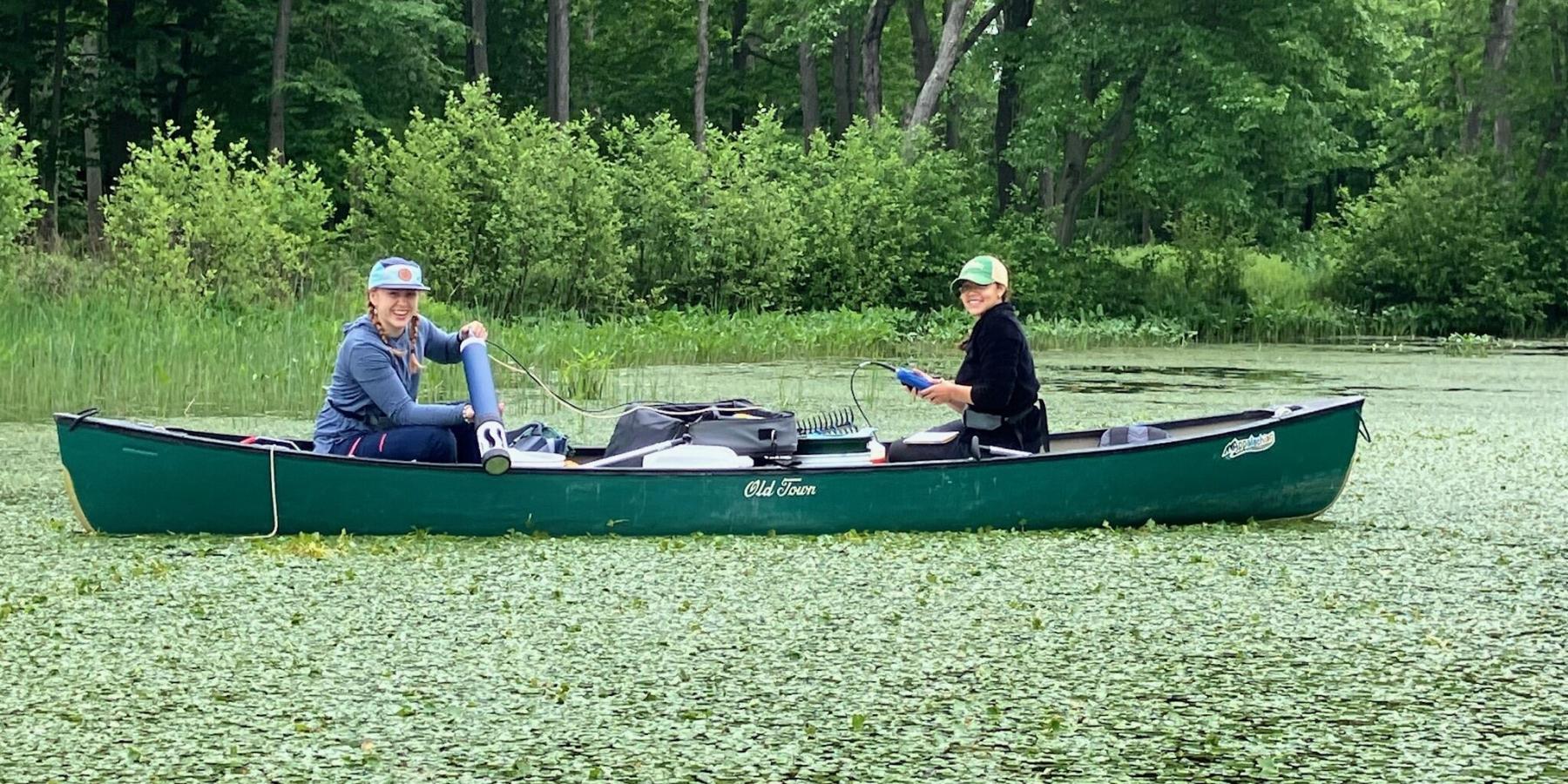Will an invasive aquatic plant destroy underwater community? This project combines removal and preservation efforts along the Oswegatchie River with active research to determine whether Water Chestnut populations can support fish as habitat.
I spent eight weeks at St. Lawrence University doing aquatic conservation research with Dr. Bradley Baldwin and a fellow student researcher, Lilia Smith '26. In our project, we studied an invasive species, water chestnut (WC), which has been found in local watersheds and has taken over a section of the Oswegatchie River. This was part of a larger project sponsored by NYSDEC to manage WC populations in the area.
We balanced gathering data in the field, processing samples in the lab, and analyzing our results over the course of 2 months. I specialized in developing protected areas free of WC to allow native vegetation to repopulate. I also focused on testing the suitability of WC as habitat to fish by evaluating abiotic conditions and food sources.
I found that water chestnut is capable of supporting creatures from microscopic zooplankton to large game fish, however the plant can threaten the dissolved oxygen content of the water and pose dangerous conditions for fish overnight.
Through this project, I furthered my skills using limnology equipment to track conditions and signs of life near sites where there is abundant WC. I organized my final theoretical and statistical findings in a scientific-style poster and am sharing our progress with the local and greater communities via social media.
